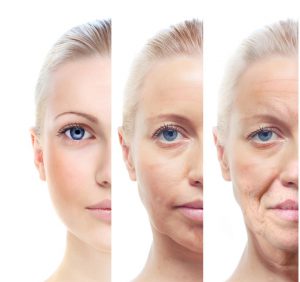A common belief that is that our eyebrows “fall” with aging, much like the notion that are nose continues to grow. In reality, it’s actually more complicated. The good news is that taking the time to ask the right questions, and clearly evaluate what’s really going on, can potentially help avoid an un-necessary procedure and help you make the correct choice for you.

The Aging Process
As seen in the photo above there is certainly aging related changes ongoing as one ages from early youth to the golden years. But if you look closely at the eyebrow levels in all three faces, you can see something is different, yet the eyebrows are essentially in the same positions. During routine consultations in our Aliso Viejo office, I often ask patients to bring in photographs of themselves in their twenties, thirties, and beyond. This is important because what better way is there to compare changes than through earlier photographs or ourselves.
So if they eyebrows are not falling then what’s going on? Going back and looking more closely at the photographs and comparing the areas immediately underneath, above, and around the brows you can see a loss of fullness or volume leading to deflation of the areas and the appearance of excess and loose skin. Think of the loss of volume as something similar to a balloon losing air (deflating). The volume loss is due to the loss of fatty tissue, bone, collagen and other elements.
In this case, elevating the eyebrows, as one would do during a browlift procedure, would actually make the eye area look worse and hollow. Here, the best option would be an upper (and lower) blepharoplasty (bleph-A-Row-Plas-Tea) and re-volumizing the area with fat transfer (otherwise known as fat augmentation).
Many patients also inquire about laser resurfacing, which is another excellent option in this instance, but remember laser resurfacing only improves the quality of the skin, which is a terrific but it does not add volume. Similarly, treatments like Pelleve and Thermage do not re-volumize and fillers like Juvederm and Restylane are options but fat augmentation is simply a better way to go, both aesthetically and financially.
Timothy R. Miller M.D.


